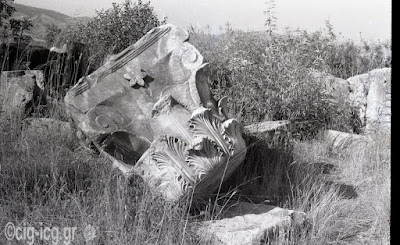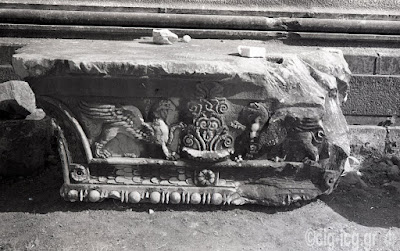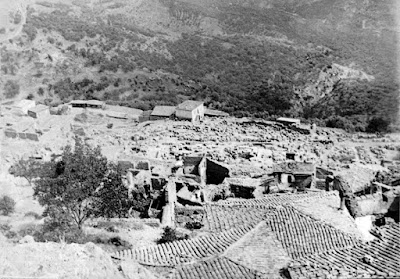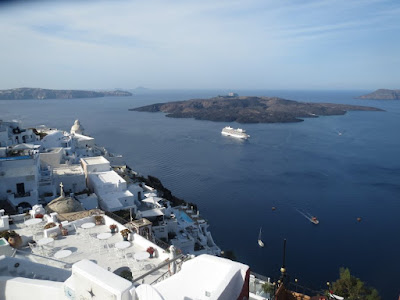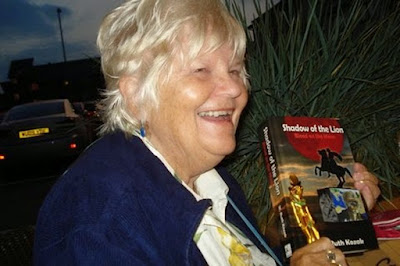
I first found out that I was the recipient of the Neda and Franz Leipen
Fellowship during an excursion to the British Museum with the Institut
für Klassische Archäologie München. I had come to see Munich as the
perfect fit for me, both personally and professionally, and I was
honestly worried about finding the same sense of purpose or belonging
elsewhere. Turns out that I was wrong to worry, because moving to Athens
has undoubtedly been one of the best decisions of my life. By taking up
residence at the Canadian Institute in Greece (CIG) – one of seventeen
foreign archaeological institutes in Athens – I have had the privilege
to become part of an active and inspiring community of international
scholars, and in this respect alone, there is never a shortage of things
to see or do. Whether attending a lecture by a renowned scholar,
visiting a museum or archaeological site with fellow enthusiasts, or
even just heading to the Red Lion for ‘darts night’, I feel that my time
in this academic community has so far been both rewarding and fun. The
atmosphere in Athens is incredible and the Greeks I have met
warm-hearted and generous, and I look forward to integrating myself more
into the local culture.

I would like to share here a little bit about my academic work and
experiences since September. Having just barely acquainted myself with
Athens, I already needed to return to Germany for the Darmstädter
Diskussionen: 7. Interdisziplinäres Doktorandenkolloquium zu antiken
Kulturen, where I presented on executions of condemned criminals staged
as mythological dramas in the Roman arena. Such executions are of
interest to me as a parallel, but contrasting phenomenon to the
mythological portraiture I am researching for my dissertation. In the
talk, I wanted to focus on a certain paradox in mythological executions:
that the condemned were cast not merely as monstrous or reviled
figures, but even as some of the most revered heroes in the Roman world.
Overall, I argued that whenever the condemned is cast as a ‘hero’, the
mythological narrative is supplied with a striking an unorthodox plot
twist which has the effect of ‘distancing’ the malefactors from this
virtuous mythic identity. Figures such as Orpheus, Daedalus and
Hercules, for instance, all have certain divinely-sanctioned rights
which allow them to exceed the normal bounds for human behaviour, to
even stare death in the face and yet survive unscathed, but which are of
course denied to the average mortal. The condemned “actors’” inevitable
failure to exercise these same rights, and to fulfill their dramatic
roles, can only result in their death. Overall, the manner in which the
condemned are executed symbolizes that they are by no means exempt from
human and divine laws, and so must suffer for their transgressions
accordingly. I found the conference in Darmstadt a unique and laid-back
venue for doctoral students to discuss their research and receive
feedback, and I thoroughly enjoyed seeing old friends and meeting new
ones. Of course, I could not resist stopping at the Oktoberfest to drink
a Maß (or three) on my way back to Athens…

I have been focused on several academic and personal goals since
returning to Greece. As a PhD student specializing in visual culture
from Rome and its environs – something which I often get flack for in
Athens, even if jokingly – I want to use this opportunity to broaden my
horizons. Despite my seemingly incurable case of wanderlust, I am
actually exploring numerous of Greece’s major archaeological sites and
museums for the first time. Whether heading to Sounion to check out the
temple of Poseidon and then sleeping under the stars, or to Epidaurus to
visit the sanctuary of Asklepios and then testing the acoustics of the
theatre, I feel that I am finally acquiring a firsthand understanding of
the monuments and topography of Greece. I have also travelled to
Eleusis, Brauron, Thebes, Eleon, Napflio, Mycenae, Delphi, Meteora,
Aegina, and Santorini… but the most memorable moment for me was in
Thessaloniki, when I saw the Derveni Krater. This exquisite volute
krater is adorned with scenes of Dionysos and Ariadne, along with satyrs
and maenads in ecstatic frenzy.

Another personal goal I have set for myself this year is to learn some
(Modern) Greek. I have therefore been taking lessons at the Athens
Centre, with the wonderful Eleni as my instructor. Although I have a
long way to go, so far learning Greek has been an interesting and
rewarding experience for me. My time at the CIG has also allowed me to
familiarize myself with the day-to-day operations of this research
institute, and with the Canadian projects in Greece which the CIG
endeavours to support. In addition to assisting in the library, I have
been working on the ‘Portal to the Past’, which is a digital archive of
our archaeological projects and research.

Most notably, the Neda and Franz Leipen Fellowship allows me to conduct
research at world-renowned institutes for classical studies, such as the
British School Library and the Blegen Library of the American School of
Classical Studies at Athens. Since coming to Athens, I feel that I have
able to focus and refine the research questions and methodologies for
my dissertation “Portraits of Romans as Hercules and Omphale”, which has
opened up some new avenues of inquiry for me. I suppose that the crux
of my overall argument, so far at least, is this. Since the ancient
textual sources invariably offer Hercules and Omphale as a negative
exemplum for male and female behaviour, scholars tend to interpret
images of Hercules and Omphale in a negative light, or even as Augustan
counter-propaganda against Marcus Antonius and Kleopatra. I prefer,
rather, to situate images of Hercules and Omphale within the Hellenistic
iconographic tradition of “disarming love”, as yet another expression
of the power of Eros. In terms of the mythological portraiture, Hercules
and Omphale – as a symbol for 'the power of
eros’ – were suitable models for spouses in an era which witnessed first of all a positive re-evaluation of
eros in marriage, and secondly of
andreia (i.e. ‘manliness’) in women, both of which contributed to
harmonia
between husband and wife. There were, however, clear limits to this
identification; there is a deliberate avoidance of connotations seen to
undermine Roman patriarchal values, and – in the end– a socially
acceptable iconography for the portraiture was never adequately
formulated. Portraits of men and women as Hercules and Omphale therefore
remained exceptional in Roman visual culture as a whole.

I feel extremely fortunate to receive this fellowship and to
experience so much in these short few months in Athens. I cannot neglect
to mention the people at the CIG who have made me feel so welcome here.
I would like to thank David for all his support, and for generally
“putting up with me” (haha); Jonathan for making the office an enjoyable
place to work, and for introducing us to the Red Lion and Excalibur
(because a medieval castle with a dragon is always cool); and Tony for
his endless encouragement (and fresh oranges of course). I would
especially like to thank Vicki and Lauren for their friendship and for
all our crazy adventures together – Athens will not be the same without
them in the New Year, but I look forward to the times to come at the
CIG!
Sarah Nash
Leipen Fellow, CIG
















